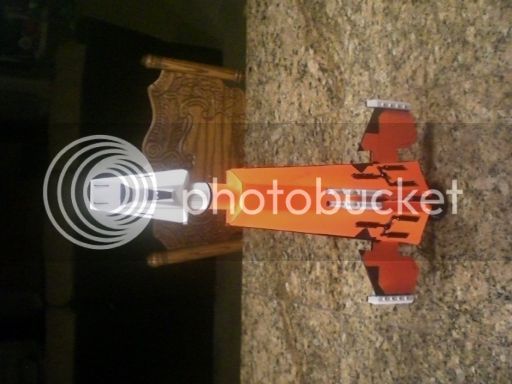- Joined
- Jan 19, 2009
- Messages
- 3,443
- Reaction score
- 1,322
It seems a shame that it appears Estes is discontinuing the Asteroid Hunter.
I bought one when they came out, but only started building it (my build queue is just WAY too big....)
Let's start with a picture of parts. You get 4 sheets of laser cut parts, motor mount stuff, parachute, shock cord, and miscellaneous other plastic pieces.

The motor mount is a typical build. One part I found interesting/different is one ring comes pre-cut to fit around the motor hook. When gluing it on I used tape to hold it to get a tight fit to the motor tube. The completed mount

You then build the front bulkhead. I had some difficulty with this. You first sand a bevel and glue the two pieces together, and you have two other pieces to hold to get the angle correct. Here is the piece waiting for the glue to dry

When I did the rear bulkhead I had the thought to use some tape to help hold the pieces together (you can see one of the guide pieces in the upper left corner). It came out better. I just had the thought that I also could have used some straight pins to help hold the guide pieces as well


I bought one when they came out, but only started building it (my build queue is just WAY too big....)
Let's start with a picture of parts. You get 4 sheets of laser cut parts, motor mount stuff, parachute, shock cord, and miscellaneous other plastic pieces.

The motor mount is a typical build. One part I found interesting/different is one ring comes pre-cut to fit around the motor hook. When gluing it on I used tape to hold it to get a tight fit to the motor tube. The completed mount

You then build the front bulkhead. I had some difficulty with this. You first sand a bevel and glue the two pieces together, and you have two other pieces to hold to get the angle correct. Here is the piece waiting for the glue to dry

When I did the rear bulkhead I had the thought to use some tape to help hold the pieces together (you can see one of the guide pieces in the upper left corner). It came out better. I just had the thought that I also could have used some straight pins to help hold the guide pieces as well




























